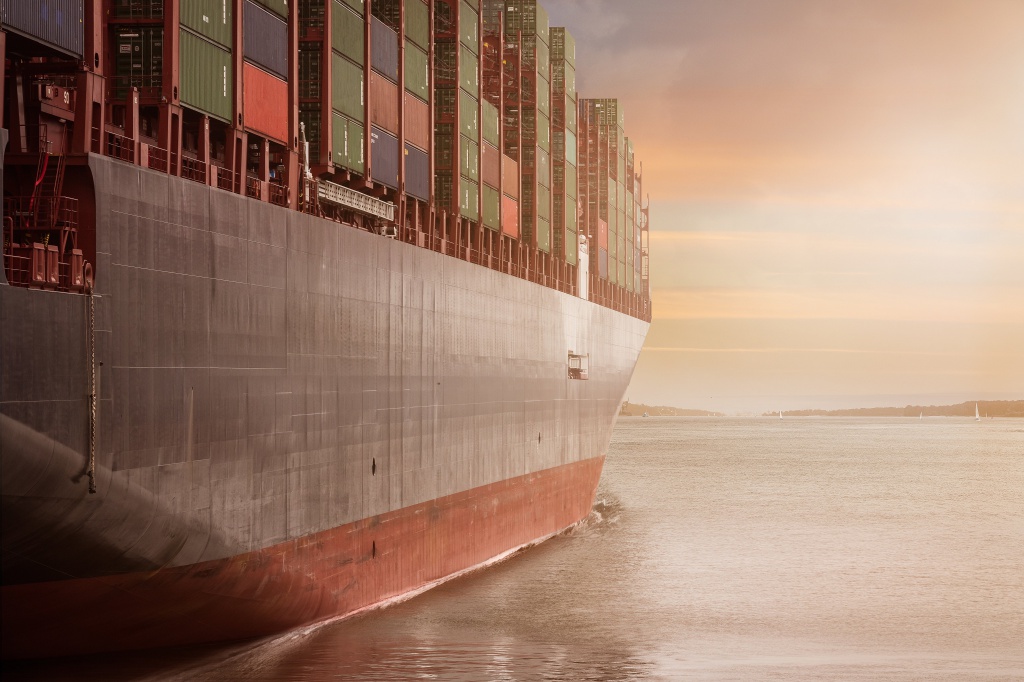

Evgeny Deshchenej, Head of the Department of multimodal transportations of TELS Group of Companies, shares his view on the container shipping market and rate trends expected in the new year.
Evegeny, how can you describe the maritime industry in the year 2017?
First, not only the container shipping sector showed a positive trend in 2017, but all the sea lines made a profit.
To recap, the container shipping sector has experienced difficulties since 2009 when the container cargo volume declined.
Freight rates started falling noticeably in spring 2015 – the competition between the shipping lines became particularly severe, so large cargo owners profited from the situation by pushing through lowest prices ever. For example, the rates from China (major ports) to Riga fell to a record level of $450 in March 2016. For reference, the rate was $1.350 in March 2015.
The activity of shipping lines is controlled by the antimonopoly committee, which prevents the companies from price collusion. To improve the situation, large shipping companies began to form alliances. As a result, by the middle of 2017 the following three alliances had appeared on the market:
• 2M Alliance: Maersk, MSC
• Ocean Alliance: COSCO, CMA CGM, Evergreen, OOCL, and
• THE Alliance: NYK Line, MOL, “K” Line, Hapag-Lloyd, UASC, Yang Ming Line
Alliances allow the shipping lines not to employ the entire fleet of ships for the existing trades by loading the operating ships fully and quickly. At the same time, the lines can use each other’s products and services thus expanding the shipping geography and increasing the general level of services.
Such policy resulted in the reduction of cargo units and predetermined the increase of rates. In addition to this, the market started growing as well as freight offers increased on all routes. By summer 2017, freight rates had grown several times over March 2016, although they had not returned to the level of March 2015.
What Awaits the Container Shipping Sector in the Year 2018?
The world market is growing. China’s economy (the largest supplier of container freight) is recovering. India is also increasing its economic position – it shows good growth rates and, according to forecasts, the growth of GDP and foreign trade will continue there. Thus, container shipping is most likely to grow in 2018.
To forecast the trends in container shipping market, I have been using the Baltic Dry Index as a forward-looking indicator. It measures dry bulk volumes, which include raw materials used in industrial production like coal, ore, etc. If the volumes of such goods fall, world production decreases, and soon it will lead to a reduction of world trade and the container shipping market.
The Baltic Dry Index has been growing since the beginning of 2017, so there has been a marked increase in container shipping since 3Q of the previous year. The growth continues in 2018.
The volume of global container traffic increased by 6.7% in January-February 2018 over the same period of the previous year totaling 26 million TEU. The container flow increased from Asia to the ports of Europe and North America most of all.
According to the Association of Commercial Sea Ports of the Russian Federation, the container turnover of Russian ports grew by 14.9% during 2 months in 2018 over the same period in the previous year.
How will presumably the rates for container shipping be changing?
As a rule, an increase in freight offer leads to higher rates. But the growth of cargoes is accompanied by a significant increase in container capacity of the commercial fleet. Shipping lines are actively making orders for and start using mega containerships with cargo capacity of over 20,000 TEU. Three mega containerships, namely OOCL Hong Kong, OOCL Germany and Madrid Maersk, entered service in 2017.
OOCL is planning to build 6 mega containerships in total with a capacity of over 21,000 TEU. The Internet is discussing the information that the MSC is negotiating the construction of 11 vessels with a capacity of 22,000 TEU in South Korea, as well as the fact that CMA CGM, a sea carrier, is planning to build 22,000-TEU ships.
According to splash247.com, the share of container ships with a capacity of over 14,000 TEU in the global container fleet will have increased to 90% by 2020 from the currently estimated 50%.
All that said, it is rather difficult to forecast rate trends for container transportations in the next 2 years. If growth rates in container capacity coincide with demand growth rates, the rates will stay at about the same level with small seasonal fluctuations.
It’s unlikely that there will be any significant steady growth. Small negative fluctuations are possible as it was in January-February 2018 against seasonal decline when the operators even took off ships from some routes to load the other operating ships fully. The shipping lines have learnt to manage prices and ship loading, which allows them to sustain the balance.
Today the market is influenced significantly by non-economic factors, such as sanctions, growing protectionist tendencies, political tension, which are more difficult to forecast. One political decision, the introduction of new tariffs, tougher environmental and sanitary requirements can reduce the cargo volume significantly on any transport route.
Today we see the risks become reality. US protectionist initiatives, which might grow into real trade wars, can significantly reduce the market for transatlantic container shipments. As a result of these wars happening against the planned growth of container capacity of the world fleet the rates might fall again.
What are the tendencies on “short sea” market?
According to data from Eurostat, 5.7 million tons of cargo were transported from the European Union to the Russian Federation by sea transport in 2017, which is 30% more than in 2016. For reference, the growth of road transportations from the EU to the Russian Federation was 16% in this period.
The European Union does everything possible to stimulate the projects developing ecologically-friendly modes of transport, which affects the structure of transportations. To recap, the major goal of the comprehensive strategy adopted by the European Commission (Transport – 2050) is to reduce the amount of harmful emissions to the atmosphere by 60%. According to it, more than half of road freight traffic over 300 km will have to be carried out by rail and water transport by 2050.
Of course, when it comes to transportations from the European Union to the CIS countries, the delivery of goods by road is still much easier and faster than by sea. In addition to longer time and more complicated procedures of sea shipping (container freight, processing time at ports, delivery to / from ports, etc.), there is also a shortage of suitable container equipment on the domestic market of the European Union. The standard semi-trailer roughly corresponds to a 45-foot container in volume, which can also be very difficult to find.
But the statistics show that the importance of sea transport in intracontinental international transportations is increasing.